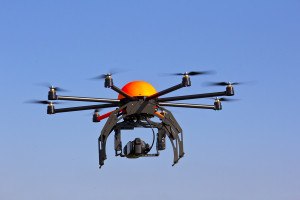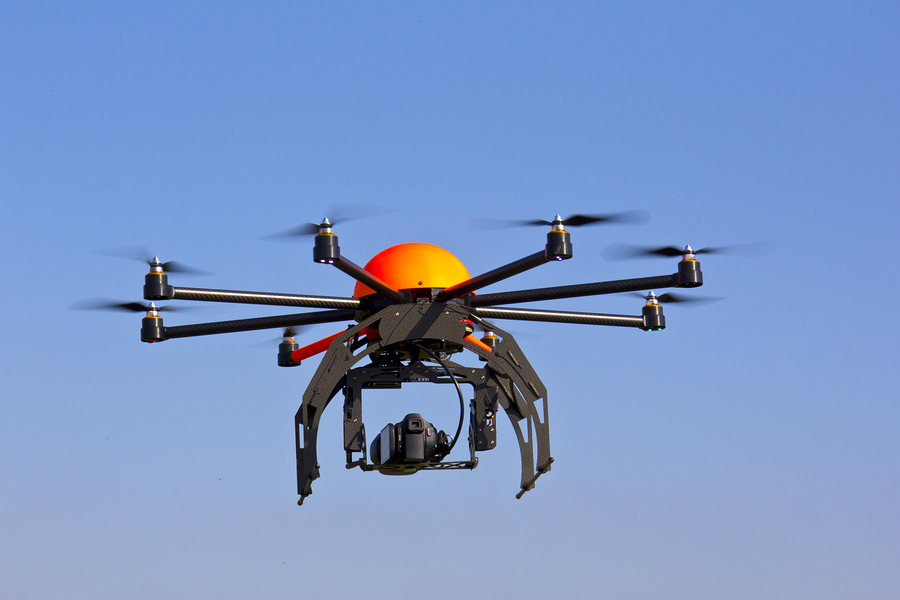United Services Automobile Association (USAA), the insurer that specializes in coverage for military families, has filed for permission from the Federal Aviation Administration (FAA) to use unmanned drone aircraft at disaster sites to assess damage.
“We’re constantly seeking ways to better serve our members, especially during catastrophes, when getting into neighborhoods immediately after can be dangerous to human life, and applying new technologies is one way we can do that,” says Alan Krapf, president, USAA property and casualty insurance group.
Currently in the U.S., drones are used in public safety, agriculture, environmental and climate research and to monitor disasters, according to the Association of Unmanned Vehicle Systems International (AUVSI), an industry group that has been lobbying the FAA to allow for greater government and commercial uses of drones.
Internationally, drones are used by several countries to assist in law enforcement and help monitor weather and disasters.
The FAA has issued drone certificates mostly to government agencies and universities. Recently, however, it permitted drone use by commercial firms including an energy firm and a film production company.
Jason Wolf, a property defense attorney and shareholder at the Fla.-based firm of Koch Parafinczuk & Wolf, sees drones being used for aerial surveys of property damage to insured roofs.
“You get to see everything. You may not even need to go up on the roof. You can see every single inch of the entire property, just with the touch of a few buttons,” Wolf said in a recent Claims Journal story on the future of drones in insurance.
He also said he expects drones to be used by insurers after a catastrophe.
“I envision a time when, after a catastrophe, an adjuster pulls up to a neighborhood and opens the trunk of his car and presses a few buttons on his tablet device and the drone does an immediate survey of everything and streams it all right to his tablet device, and he knows exactly where to go first and what’s most significant…within minutes. Costing very little money, the insurance company has a sense of everything that needs to be done in a very short amount of time,” Wolf told Claims Journal.
The FAA has testing sites where a drone can be flown with FAA approval, either for development or training purposes. Grant Goldsmith, who is president of Overwatch, a division of Avalon Risk Management, a managing general agent and a logistics risk insurer, thinks insurers should be among the commercial entities doing the testing.
“I think really, for the insurance industry, that the next logical step is to develop a platform of how you would want to use an unmanned system, let’s say, in claims, and then put that thesis of use to practical, operational practice in one of these FAA operations centers,” Goldsmith said recently.
USAA says it has teamed up with Texas A&M University in College Station and Robotocists Without Borders to research how to use drones for its insurance business.
“We believe this research can lead to safer, quicker and more economical claims service for our members and their communities,” says Kathleen Swain, a USAA staff underwriter and FAA-rated commercial pilot and flight instructor. “This research could lead to industry breakthroughs that help make an extremely difficult time for people a little easier.”
Was this article valuable?
Here are more articles you may enjoy.


 Abbott Presses Congress for Shield Over Preemie Baby Formula Litigation That Could Cost It Billions
Abbott Presses Congress for Shield Over Preemie Baby Formula Litigation That Could Cost It Billions  Tricolor Trustee Plans to Sue Founder for Auto Dealer’s Collapse
Tricolor Trustee Plans to Sue Founder for Auto Dealer’s Collapse  OpenAI And Microsoft Sued Over Murder-Suicide Blamed on ChatGPT
OpenAI And Microsoft Sued Over Murder-Suicide Blamed on ChatGPT  Verlan Files Subro Suit Against Georgia Chemical Plant After $20M Payout on Fire
Verlan Files Subro Suit Against Georgia Chemical Plant After $20M Payout on Fire 